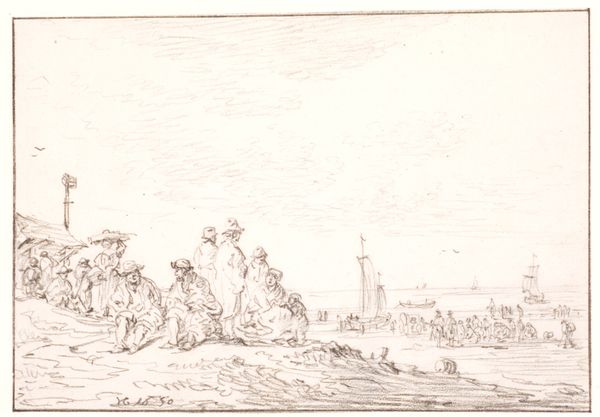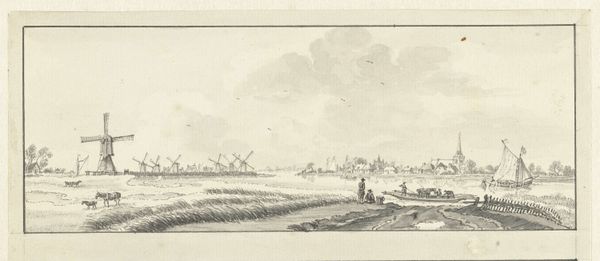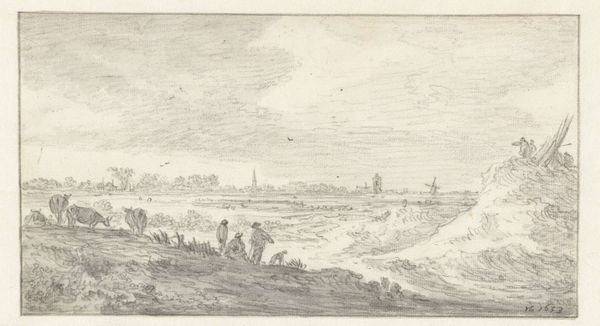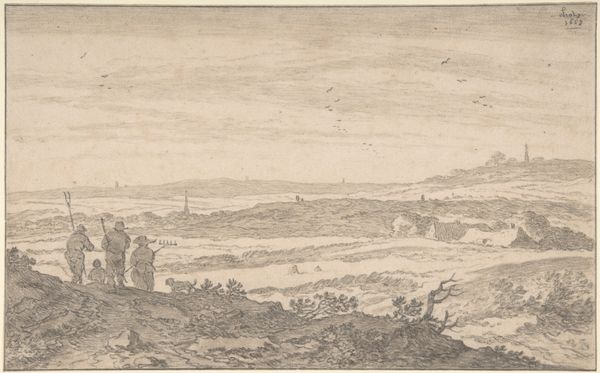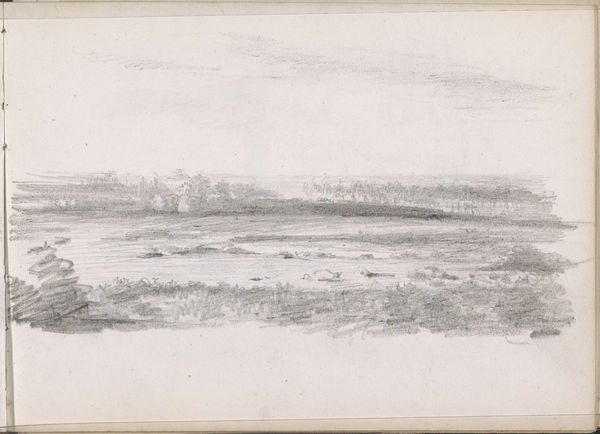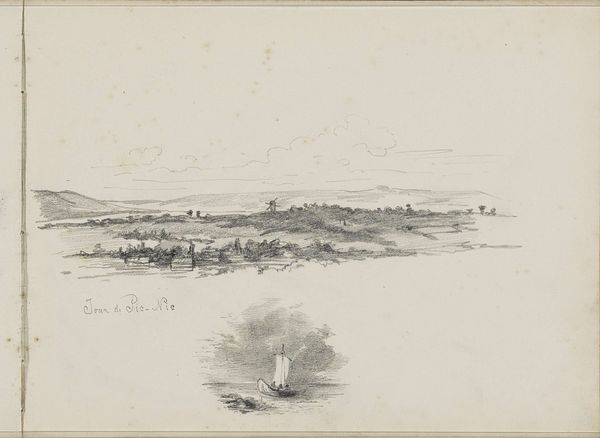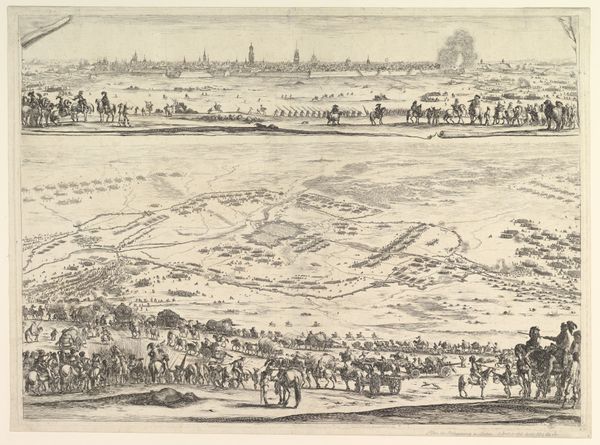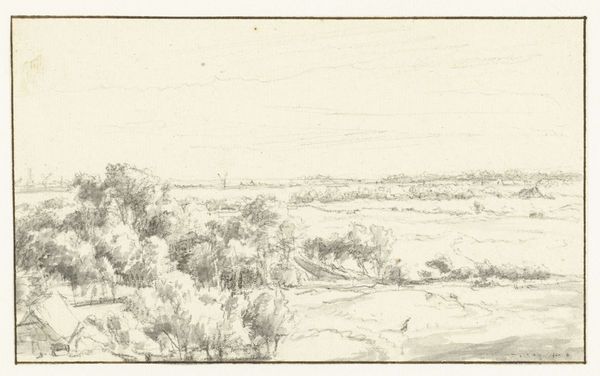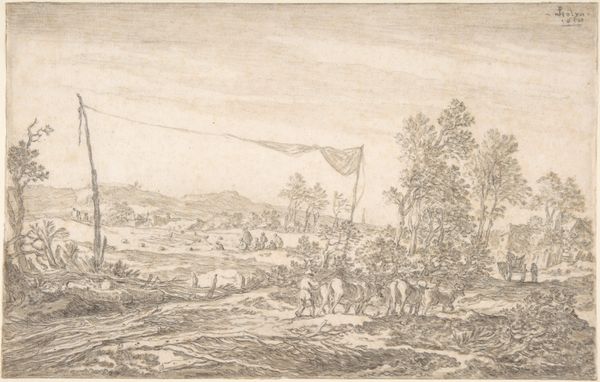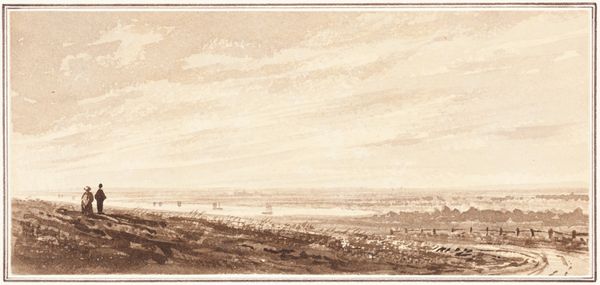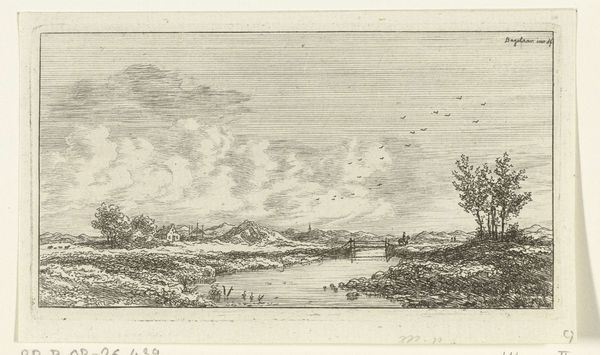
drawing, pencil
#
drawing
#
dutch-golden-age
#
landscape
#
pencil
#
genre-painting
#
realism
Dimensions: 123 mm (height) x 174 mm (width) (bladmaal)
Curator: This drawing is "Flat Lowlands Landscape," made around 1650 by Jan van Goyen. It’s rendered in pencil and embodies the spirit of the Dutch Golden Age. Editor: It’s immediately striking how open the composition feels. The land and sky merge almost seamlessly. A quiet, unassuming sense of space is evoked, and there’s an element of understated elegance, I think. Curator: Van Goyen specialized in these landscapes, often capturing the Dutch countryside's unassuming beauty. Drawings like this were crucial for his painting process. We see him working out the tonal relationships that define the low horizon and the expansive sky, which is interesting when thinking about artistic labor and the status of “finished” artworks. Editor: Notice how much information he conveys with so few lines. Look at the delicate strokes depicting the clouds; the varied pressures of the pencil creates texture and depth with such economy of means. Curator: And it reflects the societal interest in depictions of daily life; these scenes showing genre paintings and the activities of ordinary people found a ready market with the growing merchant class, fostering national pride through artistic representation. These kinds of genre scenes served the symbolic work of the budding Republic, Editor: I agree. And beyond the symbolic, the lines along the foreground create an immediacy, leading my eye along the shoreline to the men on the right side of the piece; the marks direct the viewer’s eye deliberately. Curator: It also reminds us of how much these landscapes reflect the ongoing Dutch struggle to manage and live alongside water, from dyke building, mills, boats: this landscape is carefully made and constructed, rather than 'naturally' so. This reveals the interplay of land, labor and capital investment that are often naturalized in the history of art. Editor: I find the artist’s mastery and clarity so attractive. Looking closer at the subtleties here, and reflecting upon all that historical context makes Van Goyen’s accomplishment truly compelling. Curator: Absolutely; reflecting on how drawings and paintings contributed to forming and reflecting Dutch cultural and economic life gives an insight into the historical construction of what has been deemed ‘art’.
Comments
No comments
Be the first to comment and join the conversation on the ultimate creative platform.
